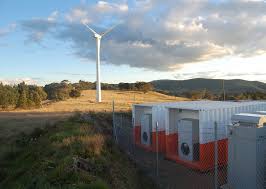The operator of South Australia’s vast network says it has no concern about the growing penetration of renewable energy on its grid, and is in fact encouraging remote towns to look at high penetration renewable micro-grids to reduce costs.

South Australia is likely to source more than 50 per cent of its electricity needs from fluctuating, but highly predictable, wind and solar power this year, and the penetration will continue to grow.
Last week the Australian Energy Market Operator issued a report on the growing penetration of renewables, and the imminent departure of the last coal generator, but found no threat to energy security.
SA Power Networks chief executive Ron Stobbe told analysts: ”We don’t see any major implications at all for our networks. We can manage generation from any source.”
Indeed, SAPN is looking to rapidly increase the share of renewable energy in parts of its grid, to increase reliability and reduce costs – both for itself and its consumers.
It says it is talking with a number of remote towns on the feasibility of high penetration renewable energy micro-grids, that might focus on wind and /or solar power, plus diesel back-up or battery storage.
SAPN says this will be a cheaper option for the network than upgrading its extended grid, and also in making repairs to lines damaged by storms and fires. And it will increase safety.
Networks in Western Australia and Queensland are also looking at high renewable penetration micro-grids for the same reasons. A recent analysis suggested using solar and storage could cost just one-tenth of the price of other proposed methods to protect against fire risk.
SAPN is also looking to trial “mid-scale” network storage to improve reliability, allow for higher renewables penetration and defer network upgrades. Ergon in Queensland says a similar strategy is cutting network costs by one third.
SAPN says it is also conducting residential battery storage trials with multiple vendors, to ascertain the value to consumers and to networks by deferring upgrades, and is creating an innovation centre to look at such technologies.










